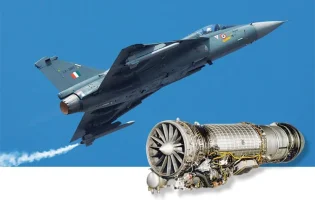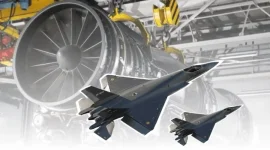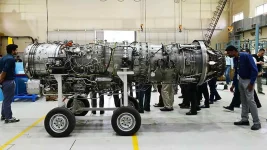- Views: 2K
- Replies: 10
The Gas Turbine Research Establishment (GTRE), a leading research and development organization within India's Defence Research and Development Organisation (DRDO), has initiated a groundbreaking project to modify its Small Turbo Fan Engine (STFE) for air-launch capabilities.
The STFE, known as the Manik engine, is a domestically developed propulsion system designed to power subsonic cruise missiles and unmanned aerial vehicles (UAVs).
With a thrust output of approximately 4.5 kN, the Manik engine has already proven its effectiveness in various ground and sea-level tests, including successful flight demonstrations.
However, adapting this engine for air-launch presents a new set of challenges that require innovative engineering solutions.
Air-launching missiles and UAVs introduces complexities related to varying atmospheric conditions, fuel management, and thrust control.
To address these challenges, GTRE is focusing on modifying the engine's Fuel Control Unit (FCU). The FCU plays a crucial role in regulating fuel flow to the engine, ensuring optimal performance and stability under different operational conditions.
For air-launch applications, the FCU requires significant recalibration to:
- Enhance Fuel Flow Dynamics: The FCU must precisely manage fuel delivery during the dynamic air-launch phase, where rapid changes in altitude and speed can significantly impact engine performance. This ensures stable combustion and consistent thrust output.
- Compensate for Temperature and Pressure Variations: Launching from different altitudes exposes the engine to varying air densities and temperatures. The modified FCU must compensate for these changes to maintain engine efficiency and prevent stalls or overheating.
- Ensure Durability for Multiple Launches: Unlike ground or ship-based launches, air-launched systems may experience repeated launch and recovery cycles. The FCU needs to be robust enough to withstand these stresses and maintain reliability over multiple missions.
This initiative by GTRE showcases India's growing prowess in aerospace technology and its commitment to developing indigenous solutions for its defence needs. The successful completion of this project could pave the way for further advancements in propulsion technology and contribute to a more secure and self-reliant India.





